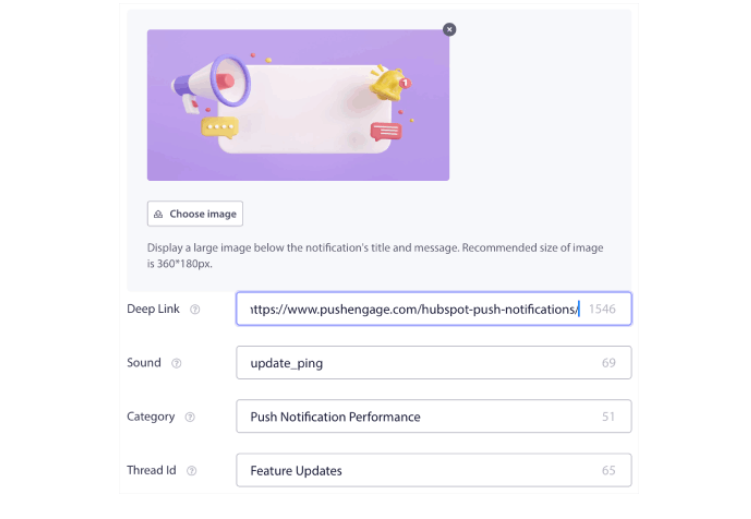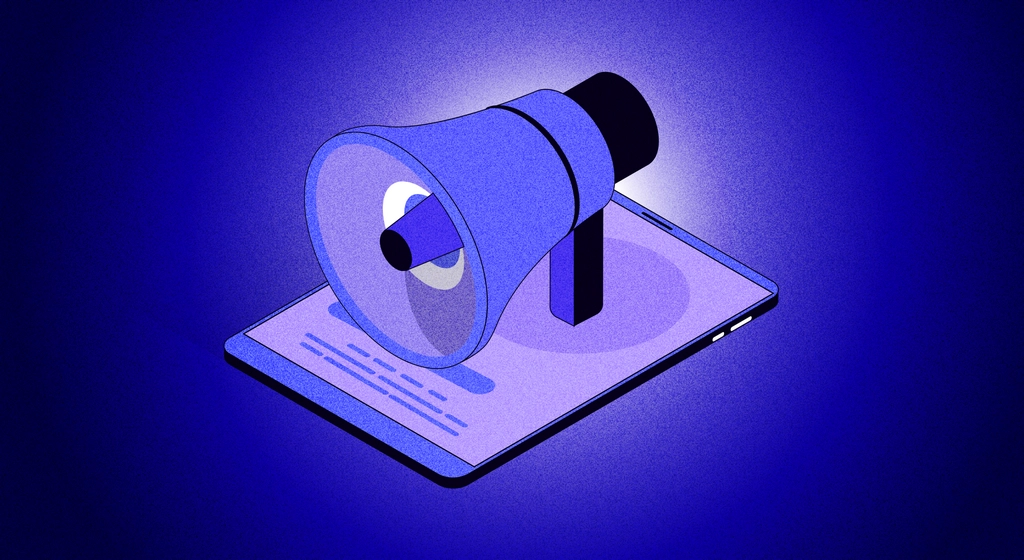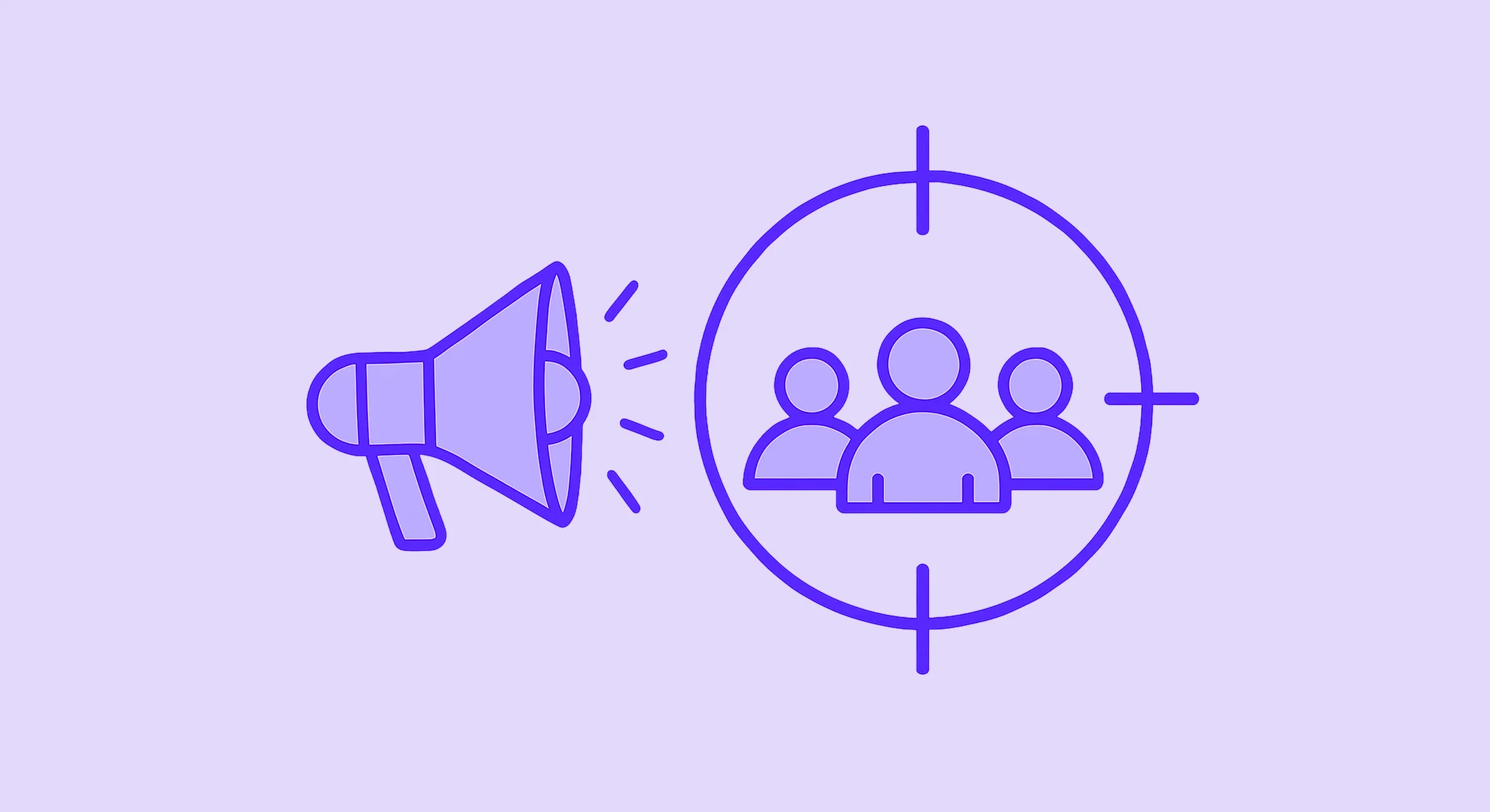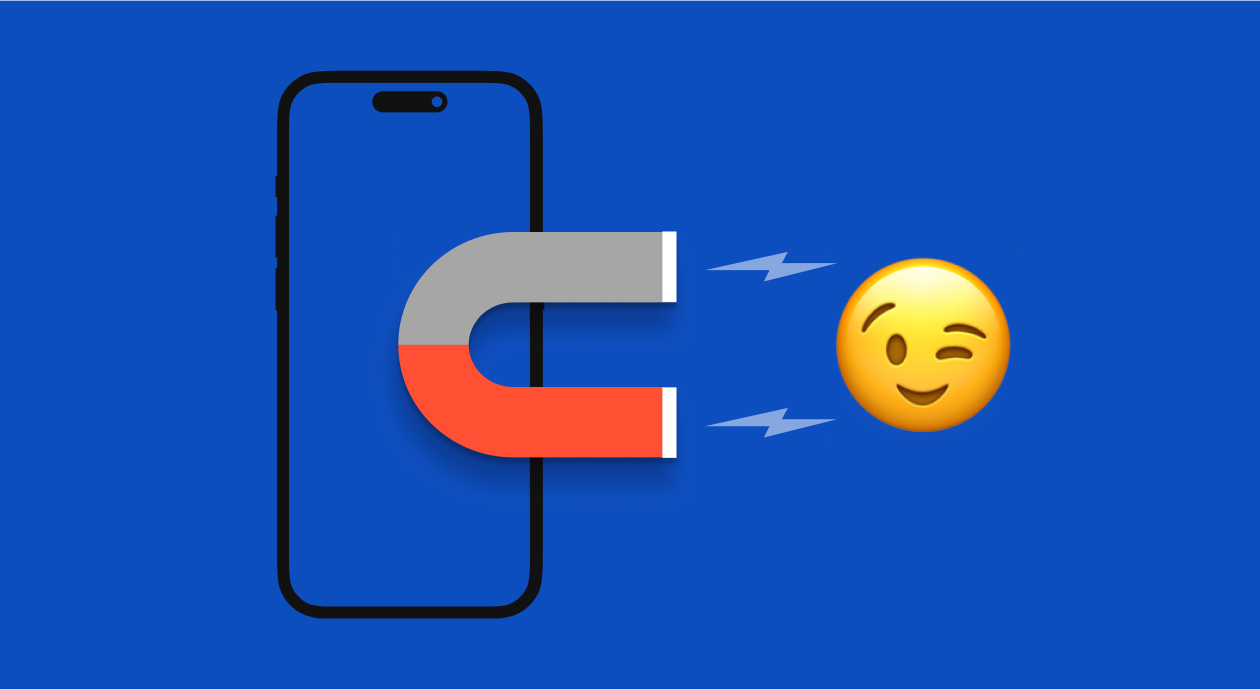When it comes to converting, onboarding, and retaining mobile app users (especially new mobile app users), few channels are as effective as push notifications. Did you know that users who receive push notifications within the first 90 days after their initial app open have retention rates three times higher than those who don’t?
By letting you connect with your users with personalized offers, relevant content, and essential reminders, push notifications serve as a key driver for your app’s success across the entire app journey. Not only do about 60% of app users opt in to receive push notifications (81% on Android and 51% on iOS), they also engage with them. Push notifications have reaction rates ranging from 3.4% to 4.6% across Android and iOS users.
So let’s see how push notifications work, their different types, how to set them up in your app, and some of the best services to do the same. We’ll also see how push notifications can help grow your app and how you can use your users’ buying behavior to make your push notifications even more personalized and relevant so they’re more effective.
Here goes.
How do push notification services work?
Adding notifications to an app takes quite a bit of tech wizardry. But at the high level, here’s how push notifications work:
- First, you create a push notification on your app’s server.
- Next, your server sends this notification to a push notification service like Apple’s APNs, Google’s Firebase Cloud Messaging (FCM), or third-party options like OneSignal or Pushwoosh.
- Finally, your push notification service delivers your push notification to your user’s device.
If you’re looking to build your own push notifications infrastructure, note that this simple process translates to a lot of development and maintenance work.
Take creating and managing tokens, for instance. Both the app stores need you to work with tokens to identify the client devices that your push notifications should reach. And managing tokens involves several tasks:
- Retrieving tokens from client devices.
- Tying tokens to users (and user devices) to ensure that your notifications reach the intended recipients.
- Enabling secure communications to your push notification services as needed.
- Storing and accessing tokens securely on your server.
- Updating the status of your tokens as it can change due to events like reinstalls or device restores.
You also need to work on the other parts of your push notifications infrastructure, like building an interface to manage your push notifications, generating your notification payloads, and setting up connections to your native platforms’ push services, to name some.
Given all this work, the better solution to adding push notifications to your mobile app is using a third-party push notification service. If you go with a third-party push notification service, a lot of this work is already done for you. Before we see the best push notification services for your mobile app, let’s quickly go over the most common types of push notifications.
Types of mobile app push notifications
Broadly, mobile app push notifications fall into three kinds.
Push notifications for boosting conversions.
These notifications encourage users to make in-app purchases. For example, you might send an exclusive offer to users who hit your paywall. These push notifications also work to boost repeat purchases, upsells, and cross-sells. They tie directly to your app revenue.
Push notifications for driving engagement.
These notifications aim to keep your users engaged with your app and can take many forms. These can be reminders, updates on new features, or personalized recommendations.
For instance, if you have a new feature release, you can design a cadence of push notifications to boost your feature’s discovery, activation, and adoption.
In general, the purpose of these mobile app push notifications is to help users unlock value from your app and boost your app’s stickiness in the process.
Push notifications for driving retention.
These notifications are to make your app users stay with your app. Although they overlap with engagement and conversion notifications, the primary goal here is user retention.
For example, you can create campaigns targeting users who have been inactive for a certain period, offering them special discounts or rewards to encourage them to return. Alternatively, you can reward your loyal users with exclusive offers or bonuses, such as free access to premium in-app features.
The purpose of these push notifications is to drive retention by boosting loyalty.
Let’s now explore the top push notification services that you can add to your app and implement push notifications.
The five best push notification services for mobile apps
1. OneSignal

An omnichannel customer engagement solution, OneSignal works across all your app’s growth channels and brings “everything” you need to engage your users across their entire app journey.
With OneSignal, you get push notifications (mobile and web), emails, SMSes, live activities, and in-app messaging.
With OneSignal’s journey feature, you can schedule push notification sequences that automatically deliver to your users at the right time. For example, when a new user signs up for your push notifications, you can set OneSignal to deliver your onboarding push notification sequence to them automatically.
To complement your push notifications, you also get in-app messaging. So, if there are features a new user must try, you can prompt them to do the same using in-app messages.
OneSignal also offers in-app carousels, a feature that allows you to create visually appealing messages (with up to 10 screens of content in a scrollable carousel format) for your users that you can use to show them their way around your app.
OneSignal’s journey can use user activities, too, so you can plan your user engagement journeys based on their actions. For example, if a user hasn’t been active in your app for a week, you can trigger a re-engagement sequence to bring them back to your app.
All these features, coupled with OneSignal’s advanced personalization, segmentation, and reporting, give you everything you need to execute an effective push notifications strategy.
If you’re just looking to get started with push notifications, OneSignal is one of the most accessible solutions to consider. One benefit of going with OneSignal is that when you’re ready to add more channels to your app marketing mix, like emails or SMSes, you’ll already have them available with OneSignal.
Read about Adapty’s native integration with OneSignal: Adapty + OneSignal.
Pricing: OneSignal offers transparent pricing with paid plans starting at $0.012/monthly active user for push notifications. This pricing also supports in-app messaging. However, your costs could increase if you’d like to add emails and SMSes to your marketing mix. OneSignal comes with a straightforward pricing calculator that lets you understand your investment. For push notifications (with in-app messaging), for 10,000 monthly active users, you’re looking at $129/mo.
2. Pushwoosh

A user engagement platform for subscription-based apps, Pushwoosh is a complete messaging solution for mobile apps.
With Pushwoosh, you can add push notifications, in-app messages, emails, SMSes, and WhatsApp messages to your app marketing mix.
You can use PushWoosh to design and schedule automated push notification sequences for crucial app journey stages like user onboarding. Pushwoosh also lets you send event- and action-based push notifications, for example, when you launch a sale or when a user hits your paywall.
Pushwoosh also offers personalization. You can use user attributes like name, language, or geolocation to personalize your push notifications. You can also personalize your sending times with Pushwoosh’s optimal time feature that can gauge a user’s most receptive moments.
Along with all of this, you also get robust reporting at your push notification, campaign, and overall journey level.
Since Pushwoosh, like OneSignal, is a complete customer engagement solution, you might wonder if it’s an option to consider if you’re only interested in adding push notifications to your mobile app… The Pushwoosh team says you can: “If you want to use only mobile push notifications, Pushwoosh will still be a good fit.”
Read about Adapty’s native integration with Pushwoosh: Adapty + Pushwoosh.
Pricing: Pushwoosh’s paid plans start at $49/mo. This plan supports unlimited push notifications to 1000 subscribers, 1000 emails, and 1000 in-app banner message impressions. WhatsApp and SMSes are available as add-ons for this plan. Pushwoosh also has a limited free plan for apps with about 1k subscribers.
3. Airship

A complete app experience platform, Airship brings “everything you need to capture customer value — inside and outside the app™.”
With Airship, you get push notifications, in-app messaging, live activities, emails, and SMSes to convert, engage, and retain your mobile app users. And Airship works off the app, too. So you also get app store optimization capabilities.
Airship also doubles up as a mobile app development solution with its features like feature flagging and experimentation. With Airship’s feature management and experimentation dev tools, you can treat your new app feature ideas like experiments and test them with high-quality prototypes with a small user group before fully building them out to add to your app. This can save significant development bandwidth.
Airship is clearly the app experience solution for “brands.” It’s for the more mature mobile apps from brands that want to compete on the app experience front. This one’s not for every app publisher, especially if you’re only looking for basic push notifications or in-app messaging.
Pricing: You need to go with Airship’s AXP Essentials plan for mobile push notifications. App store optimization, emails, and SMSes are available as add-ons for this plan. Pricing should be available upon request.
4. PushEngage

Coming across as a web- and WordPress-first push notifications solution, PushEngage actually offers a solid push notifications solution for mobile apps.
With PushEngage, you get automated push notification sequences, personalizations, and user targeting options using attributes like user activity and location. You also get A/B testing to test different versions of your push notifications to find messaging that resonates the best with your users.
You also get detailed reporting.
Unlike the other options on this list, PushEngage focuses solely on push notifications. While you may not miss channels like emails or SMSes, you would have liked it if PushEngaged offered in-app messages. That seems to be missing. PushEngage also seems to be geared more toward apps with an eCommerce component. So a mobile app for an eCommerce store or simply an eCommerce mobile app might find PushEngage’s features, like its cart abandonment and browse abandonment campaigns, very useful. PushEngage’s price drop inventory alert campaigns will also be useful for such apps.
Pricing: PushEngage offers a free plan with premium plans starting at $19/mo.
5. WonderPush

A complete solution for sending mobile app push notifications, WonderPush comes with everything you need to add the push notifications channel to your app marketing mix.
With WonderPush, you can design rich push notifications that you can also A/B test to find your most effective messages. WonderPush also supports personalization, so you can easily personalize your notifications using your subscribers’ first names, for instance. WonderPush works with segments, too, and comes with predefined segments for new, dormant, and online users. You can also use custom properties and events for targeted messaging.
In addition to push notifications, WonderPush also offers in-app messaging. With WonderPush, you can set up card, banner, image, and modal in-app messages. Like its push notifications, WonderPush’s in-app messaging, too, can be personalized and automated based on a user’s properties and in-app activity.
WonderPush also provides comprehensive reporting on your push notification performance, including opt-ins, CTR, and conversions.
Unlike most of the other user engagement solutions on this list, WonderPush focuses solely on push notifications and offers a complete solution for the same. If you’re looking for a no-frills mobile app push notifications solution, you can go with WonderPush.
Pricing: WonderPush offers a free 14-day trial with plans starting at €1 / month. You essentially pay €1 for every 1000 subscribers. In-app messaging will cost you an additional €3/month for unlimited impressions for up to 10,000 Monthly Unique Visitors.
Before we wrap up, let’s see how integrating your push notification service with your app’s revenue platform can make your push notifications channel even more effective.
How an app revenue platform like Adapty can improve your mobile push notifications
Push notifications are an excellent tool for growing an app. Here are a few use cases:
- Converting users to purchasers. Offers are one of the top reasons free app users decide to subscribe or make in-app purchases. With push notifications, you can promote your offers to your new users or to those hitting your paywalls.
- Winning back users. For users who have deferred, paused, or canceled their subscriptions, push notifications with offers like a discount on their next subscription can work great. These ‘we-miss-you’ offers can be further personalized based on the user’s previous engagement with the app.
- Preventing churn. Push notifications are also effective in reducing churn. For example, if a user’s payment fails, a prompt notification can encourage them to update their payment information, preventing subscription loss.
- Getting more users. Identifying your most loyal users—those who have spent a significant amount on in-app purchases, for instance—and using push notifications to encourage them to refer friends to your app can help grow your user base. Referrals are a powerful channel to drive app growth.
- Boosting app store visibility. Using push notifications, longtime users can be prompted to leave reviews, which helps improve your app’s app store visibility. And better app store discoverability naturally translates to more organic conversions.
However, to send such content through push notifications, you want your push notifications solution to have your users’ sales data.
Enter an app revenue platform like Adapty.
Adapty and similar platforms track your users’ complete buying journey. They can tell you which users have just started their trial, who have canceled a subscription, who are in a grace period, who have made a certain amount of in-app purchases, and who are longtime users.
You can easily pass this data on your users to your push notifications solutions using your revenue solutions. And with this data inside your push notifications solution, you can send hyper-personalized push notifications.
Said another way: Your revenue platform can help you execute an even more effective push notification strategy. Check out how Adapty can make your push notifications even more compelling.
Wrapping it up…
As you may have realized, push notifications actually work across the entire app growth funnel. From the moment a user opts in to receive push notifications, your push notification strategy can guide them all the way from their onboarding and making their first purchase to getting them to make repeat purchases and finally having them bring even more users to your app.
But to do all these things, you need a push notifications solution that supports automation, personalization, and segmentation. We’ve already discussed the best push notification solutions that support these. You’d also need your push notification service to work with your revenue platform because that’s how it can best use their buying behavior!
About Adapty: Adapty is an end-to-end revenue platform for mobile apps. It comes with everything you need to monetize your app. From implementing in-app products to adding paywalls and paywall experimentation and some best-in-class analytics, Adapty is a complete solution for monetizing your app. Adapty also offers integrations with leading push notification solutions so you can make the most of them. Check out Adapty.



